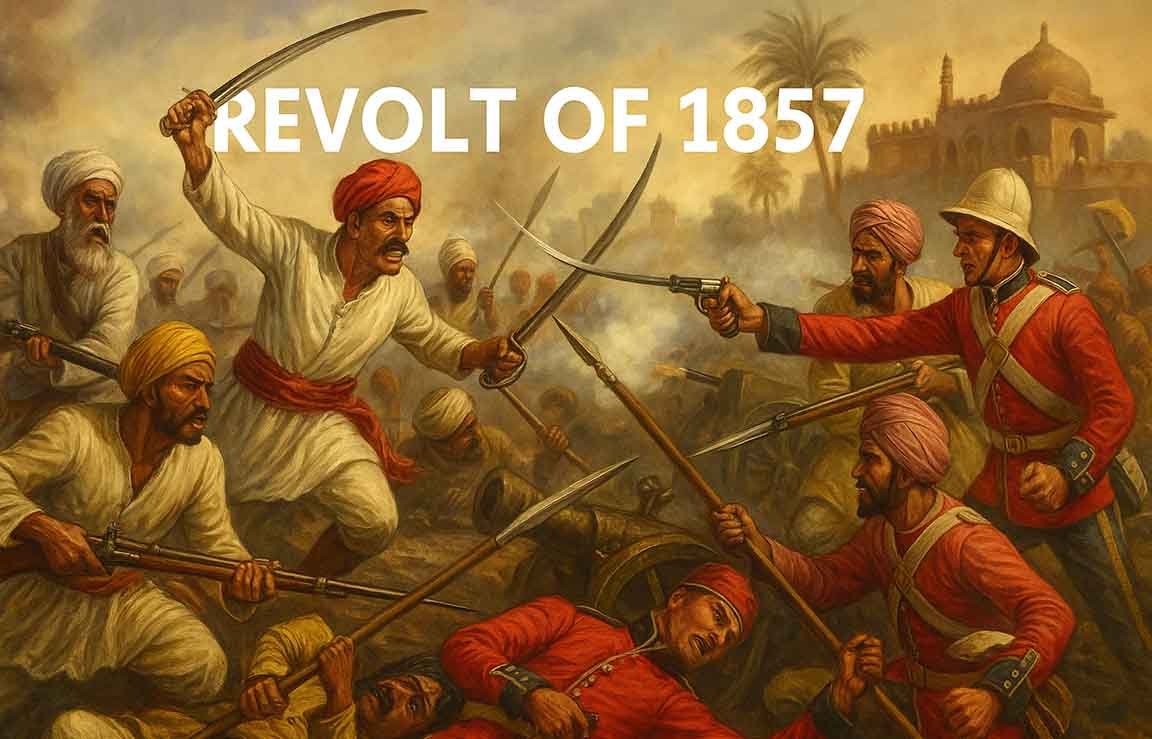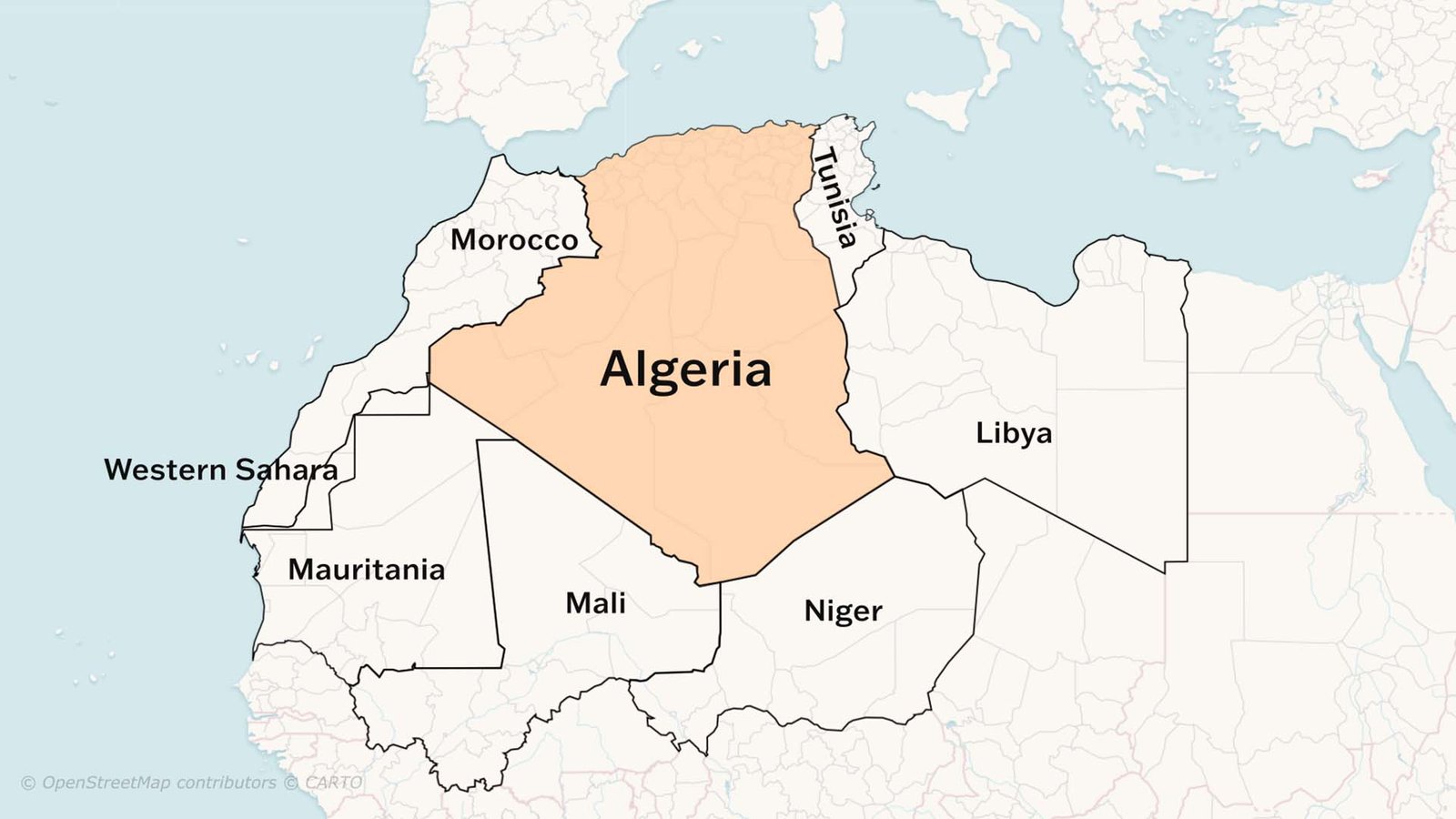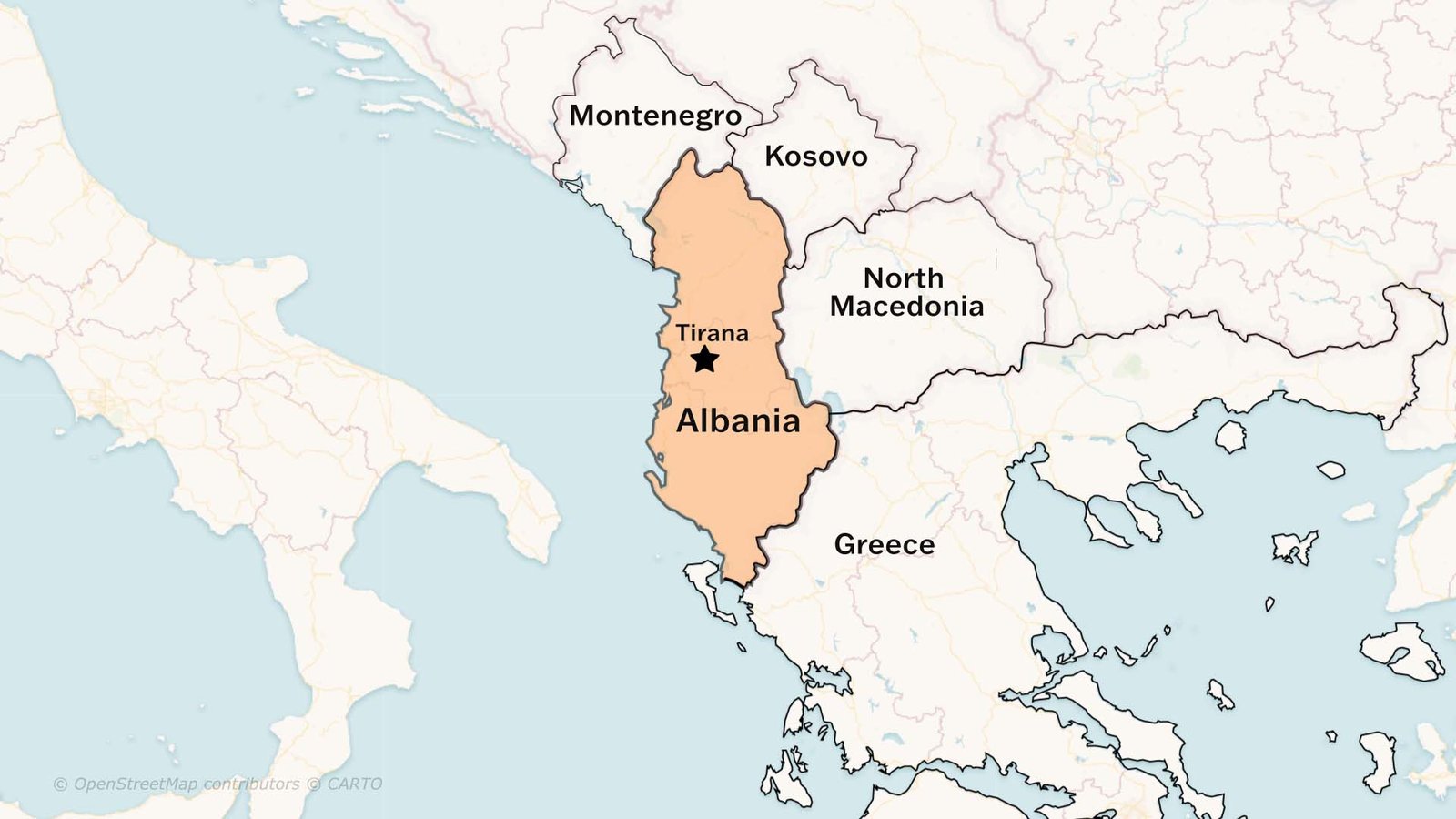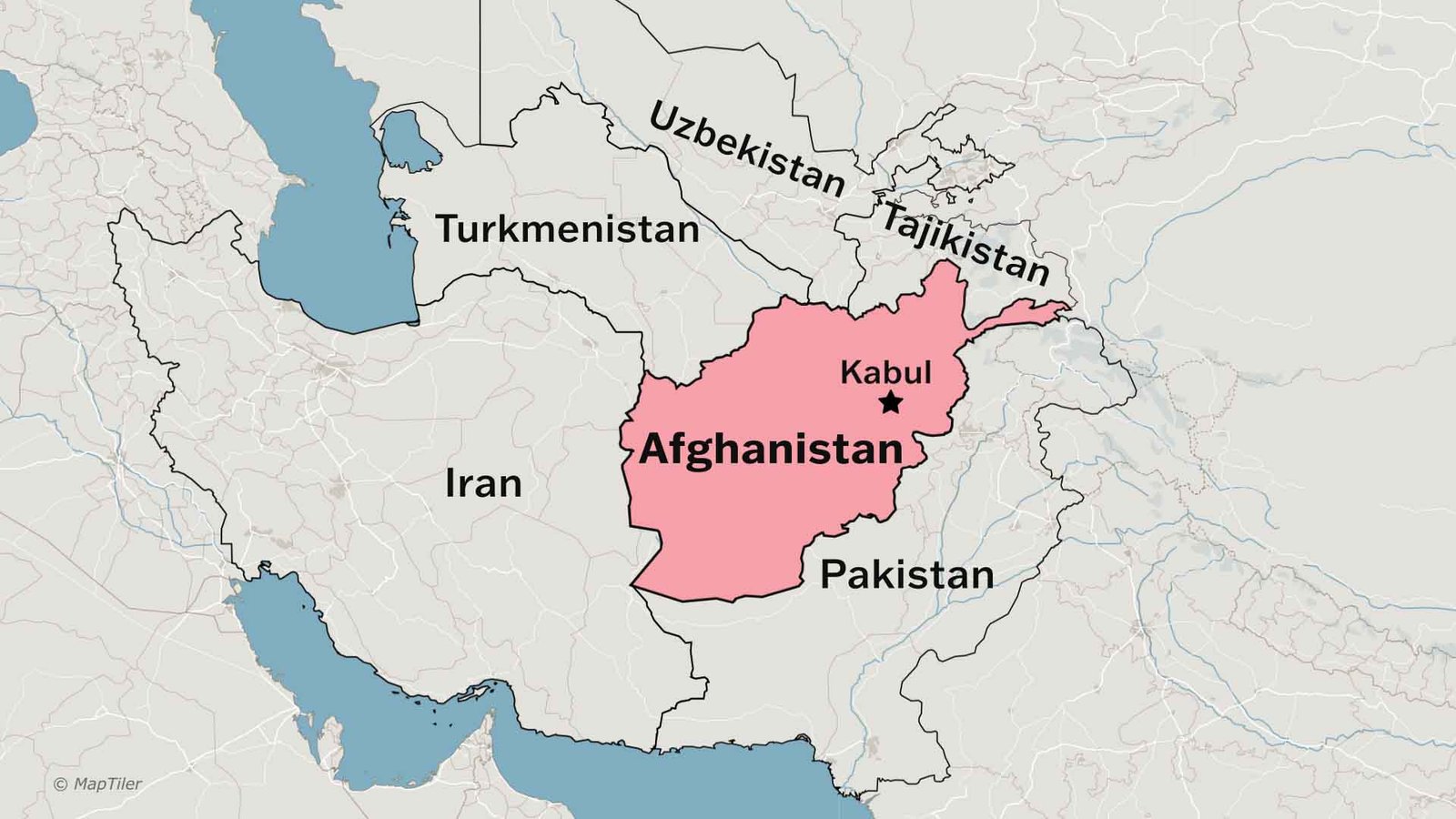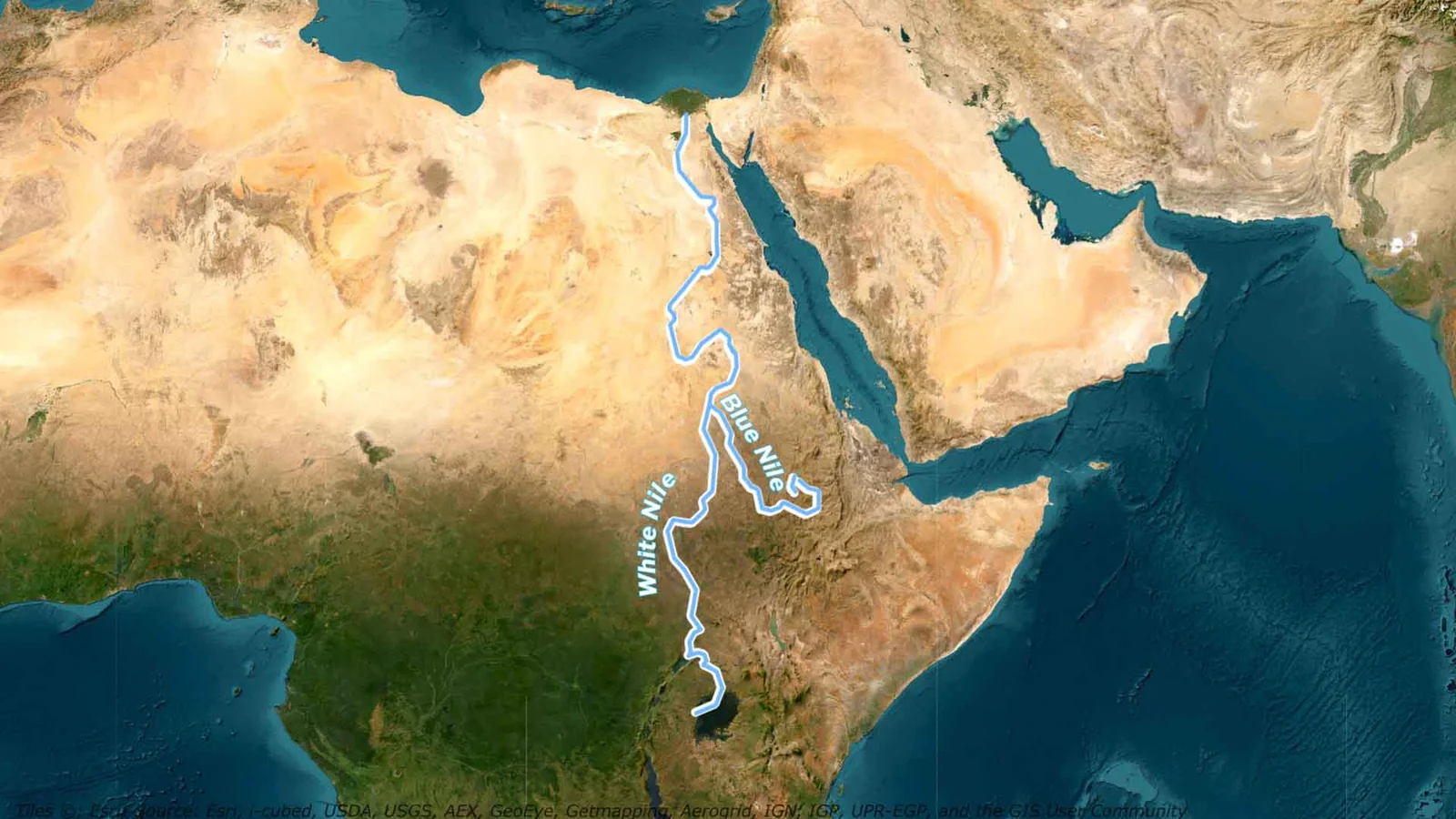In Revolt of 1857, something monumental happens in central and northern India that nearly drives the British out of the country. It begins with the East India Company’s sepoys (soldiers) rebelling against the company’s injustices. Soon, they are joined by farmers, artisans, and local rulers—everyone oppressed by the company’s policies. Together, they rise to challenge the British, shaking the company to its core.
Exactly 100 years after the Battle of Plassey (1757), this rebellion erupted in India’s northern regions, gradually spreading to central and eastern India, threatening the very foundation of British rule.
Most videos or texts on the Revolt of 1857 follow a predictable pattern: they explain the causes—economic, social, political, religious—then discuss the spark (the Enfield rifle controversy), the battles, their leaders, and how the British, with superior technology and organization, defeated the Indian forces. They often conclude with why the Indians lost: lack of advanced technology, disunity, and weak leadership compared to the British. Finally, they cite historians’ views. That’s the usual sequence.
We’ll take a slightly different approach, analyzing the situation and historians’ opinions to provide both exam-ready material and deeper insights. Don’t worry, we’ll cover the conventional points too—use the timestamps to navigate.
Historians’ Perspectives on the Revolt
Historians describe the Revolt of 1857 in varied ways. Some call it the first Indian resistance against the British, others label it “The Great Indian Rebellion,” while some dismiss it as a mere sepoy mutiny. For some, it’s India’s First War of Independence.
Vinayak Damodar Savarkar, in his book The Indian War of Independence, passionately argued it was a unified fight for freedom. However, historian R.C. Majumdar famously stated, “The Revolt of 1857 is neither First, nor National, nor a War of Independence.”
Let’s analyze Majumdar’s view. His first two points seem logical: the revolt wasn’t the first resistance against the British—earlier uprisings like the Sanyasi Revolt in central India, the Paika Rebellion in Odisha, the Ahom Revolt of 1828, or the Munda Rebellion of 1800 prove this. It also wasn’t truly national, as it was largely confined to northern and central India, with south India, the northeast, and northwest remaining largely uninvolved.
However, calling it a War of Independence is debated. Those fighting were frustrated with the company’s economic, religious, social, and administrative policies and sought to end British rule. Yet, the revolt lacked a revolutionary vision; many rebels aimed to restore the old medieval administrative systems rather than build something new.
Now, let’s dive into the conventional part—the chronology and causes—before returning to analysis.
Read more: Warren Hastings
Causes of the Revolt of 1857
The Revolt of 1857 had multiple causes: economic, administrative, social, political, religious, and military. Let’s break them down.
1. Economic Causes
The East India Company’s policies devastated Indian agriculture and the traditional economy. India’s self-sufficient economy was shattered by British exploitation. John Sullivan, President of the Madras Board of Revenue, described it vividly: “Our system acts very much like a sponge, drawing up all the good things from the banks of the Ganges and squeezing them down on the banks of the Thames.” Wealth was drained from India to Britain, leaving zamindars, middlemen, and others who suffered under these policies resentful of British rule.
2. Administrative Causes
Corruption was rampant, especially in the lower branches of the police and judiciary. Legal complexities confused common people, allowing the wealthy to exploit the poor further. The British also pursued a Policy of Exclusion, barring Indians from high-paying administrative jobs. Additionally, traditional patronage for artists like dancers and singers, previously provided by Indian rulers, was withdrawn under British rule, angering the artistic community.
3. Social Causes
The British maintained a distinct identity, never integrating with Indians. Unlike previous foreign invaders who eventually made India their home, the British treated India as a mere colony, even after 200 years. Their sense of racial superiority, considering their language, culture, and lifestyle better than Indians ones created a discriminatory attitude. This arrogance fueled resentment, as seen in incidents like signs reading “Only dogs and Indians allowed” (famously depicted in the movie, The Legend of Bhagat Singh).
4. Political Causes
The British pursued a Policy of Annexation, absorbing Indian kingdoms through strategies like the Subsidiary Alliance, Paramountcy, and Doctrine of Lapse. The Doctrine of Lapse declared that only a ruler’s biological heir could inherit a kingdom, not an adopted son, threatening many rulers without natural heirs. Between 1848 and 1856, Lord Dalhousie annexed states like Satara, Sambalpur, Jhansi, and Oudh, creating a class of dissatisfied rulers who joined the revolt and provided leadership in many areas.
5. Religious Causes
Many Indians feared that Christian missionaries aimed to convert them to Christianity, a fear backed by policies like the Religious Disabilities Act of 1850, which allowed converts to Christianity to inherit ancestral property. The British also interfered with Hindu customs, such as banning sati (through the 1829 Abolition of Sati Regulation Act), promoting widow remarriage, and encouraging girls’ education. While progressive, these reforms were seen as foreign interference in religious matters, offending many.
6. Military Causes
Indian sepoys in the East India Company’s army, known as sepoys, initially had the freedom to follow caste rules. However, in the 1820s and 1830s, the company imposed a uniform culture, requiring sepoys to abandon caste-based practices. Sepoys earned low salaries, had little chance of promotion, and were excluded from top posts. Lord Dalhousie’s Indian Post Office Act of 1854 forced sepoys to pay a fee (1 anna, or 25 paise) to send letters to their families. Lord Canning’s General Services Enlistment Act of 1856 abolished allowances (called bhatta) and required sepoys to serve overseas if needed, which many believed would cause them to lose their religion by crossing the sea. In the 1824 Burma War, sepoys who refused sea travel were severely punished, adding to their discontent.
Immediate Cause: The Enfield Rifle Controversy
The spark came in a North Indian regiment. The British replaced the Brown Bess musket with Enfield rifles, which used greased cartridges that had to be bitten open before loading. Rumours spread that the cartridge grease was made from cow and pig fat, sacred to Hindus and taboo for Muslims. This deeply offended the sepoys’ religious sentiments.
On April 8, 1857, a young sepoy named Mangal Pandey attacked his officer at the Barrackpore regiment and was later hanged. Tensions escalated. On May 9, 1857, 85 sepoys who refused to use the cartridges during a drill were dismissed and sentenced to 10 years in prison. The next day, May 10, sepoys stormed the Meerut jail, freed their comrades, killed British officers, looted arms and ammunition, and set British buildings ablaze. They declared war on the British and marched to Delhi to reinstate the Mughal Empire.
The rebellion spread to other regiments, who joined in, killed their officers, seized weapons, and burned British properties. They rallied toward Delhi’s Red Fort, hoping to make Mughal Emperor Bahadur Shah Zafar their leader. Zafar hesitated, aware that one wrong move could cost everything, but eventually agreed. He wrote letters inviting other rulers to join the rebellion. For a week, there was a lull—a calm before the storm. Then, the revolt spread, with mutinies breaking out across northern and central India, establishing key centers in Delhi, Kanpur, and Lucknow.
Local leaders, zamindars, and others joined the sepoys. In Kanpur, Nana Saheb and Tantia Tope expelled British forces. In Lucknow, Birjis Qadr and Begum Hazrat Mahal led the revolt. In Jhansi, Rani Lakshmibai led rebel forces against the British. Other leaders included Khan Bahadur Khan in Bareilly, Maulavi Ahmadullah in Ghaziabad, and Kunwar Singh in Arrah, Bihar. The British were temporarily driven out of these areas.
The British Counterattack
The first phase favoured the Indians, but the British regrouped for the second phase. They brought reinforcements from England and passed new laws to capture and punish rebels more easily. British officers were deployed to suppress local uprisings: John Nicholson, James Outram, and William Hudson in Delhi; Colin Campbell in Lucknow and Kanpur; Winslow Taylor in Arrah; and Hugh Rose in Jhansi.
By September 1857, the British recaptured Delhi, imprisoning Bahadur Shah Zafar in Rangoon, where he died in 1862. In March 1858, Lucknow fell back under British control. Rani Lakshmibai was killed in June 1858, and Jhansi was recaptured. Tantia Tope escaped to the jungles and continued fighting but was killed in 1859.
Was It Just a Sepoy Mutiny?
The revolt was unique. While sparked by sepoys, it wasn’t limited to them—farmers, artisans, and local leaders joined in, making it more than a military mutiny. However, the Bombay and Madras armies remained neutral, and Sikh and Gorkha regiments even aided the British. Awadh was in open rebellion, as were parts of Bihar, but the revolt didn’t encompass all of India.
Was It a National War of Independence?
Not quite. The concept of a “nation” wasn’t fully developed in India at the time, and the revolt was largely confined to northern and central India, with south India remaining uninvolved. Some groups, like moneylenders and educated Indians, benefited from British rule and saw no reason to join the revolt. Many sections of society lacked a shared sense of national identity or a common cause to fight the British.
Yet, the revolt had an anti-foreign character, with a clear agenda to expel the British. However, there was no clear vision for what would follow, no forward-looking plan.
Weaknesses of the Revolt
The revolt failed to achieve a pan-Indian character. Some rulers and zamindars, fearing British reprisals, stayed out. The middle class, with liberal and progressive views, disliked the rebels’ conservative ideas and preferred British social and educational reforms over a return to medieval systems. The rebels lacked the British’s resources—manpower, materials, and technology. The British had a centralised bureaucracy, advanced technology, and communication systems like railways, post, and telegraph. The rebels had bravery and zeal but lacked the organisation to defeat a disciplined company.
Aftermath: The Act for the Better Government of India (1858)
Before fully suppressing the revolt, the British Parliament passed the Act for the Better Government of India on August 2, 1858, also known as the Queen’s Proclamation. India, a prized British colony, was transferred from East India Company rule to the British Crown for better management. The act abolished the Board of Control and Court of Directors, ending the double government system. A new Secretary of State for India, a member of the British Cabinet, was appointed, assisted by a 15-member Council of India. The Governor-General of India was given the title of Viceroy, supported by a four-member Executive Council.
Before 1858, the system included a Governor-General and Executive Council in Calcutta, Governors of Bombay and Madras, and the Court of Directors and Board of Control in London, all under the British Crown via Parliament. After 1858, the double government was replaced by the Secretary of State system, with the Viceroy reporting directly to the Secretary.
The act emphasised preserving Indian rulers’ dignity. Annexations, including the Doctrine of Lapse, were halted, allowing adopted sons to inherit kingdoms, though rulers had to acknowledge the Queen as sovereign. The army reduced Indian sepoy recruitment, favouring Europeans, Gurkhas, Sikhs, and Pathans—groups loyal to the British during the revolt—over farmers from Awadh, Bihar, and central India. Native customs and social practices were to be preserved, and landlords’ and zamindars’ land rights were protected. With this, the East India Company’s rule in India ended.
Analysis
The Revolt of 1857 was a significant event, but its scope and impact are debated. It wasn’t the first resistance, as earlier revolts show, nor was it national, being limited geographically. Its aim to end British rule suggests a war of independence, but the lack of a unified vision or revolutionary ideology undermines this label. The revolt’s failure stemmed from disunity, limited resources, and the absence of a pan-Indian character, while the British’s superior organisation and technology secured their victory.
For exam purposes, focus on the causes (economic, administrative, social, political, religious, military), the Enfield rifle spark, key leaders (Mangal Pandey, Rani Lakshmibai, Nana Saheb, Tantia Tope, Begum Hazrat Mahal, Kunwar Singh), and the British response. The Queen’s Proclamation and its reforms are crucial, as they mark a shift in British governance.
Revolt of 1857 Animated Documentary: Watch Now

